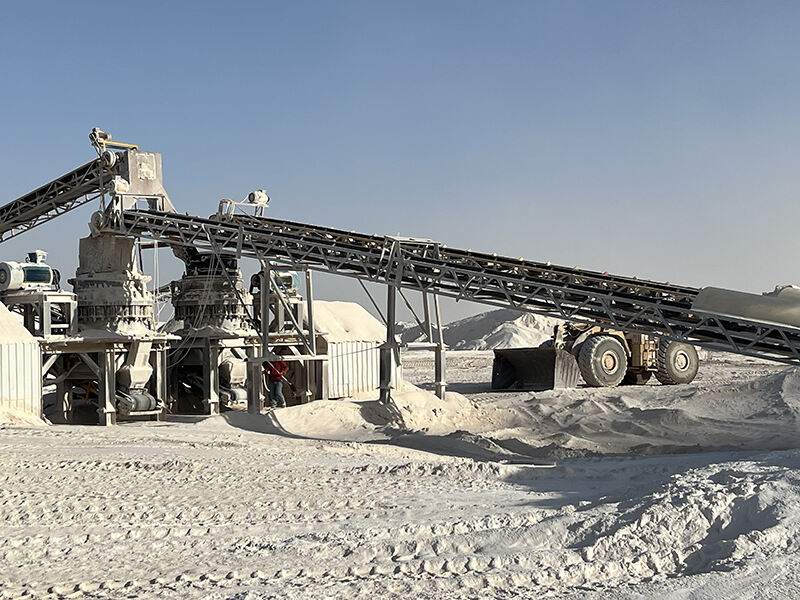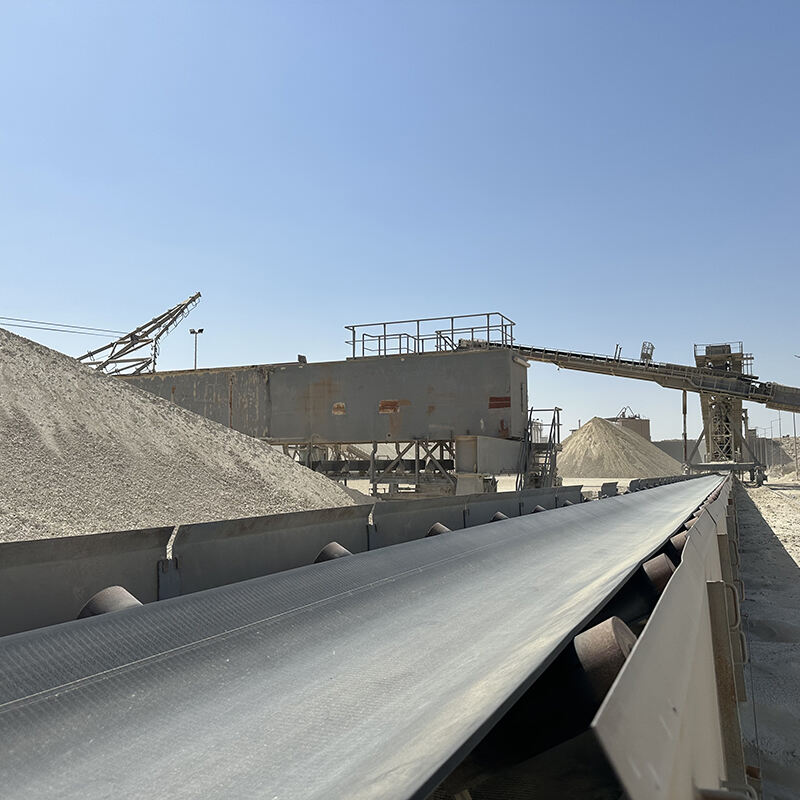
Running a quarry is hard work, but maintaining site safety and safe practices with your material handling equipment is one of the most important aspects. Conveyor belts, rollers, screens – each of these equipment are supremely important for the production procedure. Proper maintenance increases the lifespan of equipment and makes it less likely to break down while also serving as a way control for costs. Here, what we will do is guide you on the critical maintenance practices that assist in maximizing the productivity of your quarry equipment.
1. YOUR FIRST LINE OF DEFENSE: DAILY INSPECTIONS
The chief importance of servicing: Regular maintenance is important to detect problems before they turn into expensive issue. Develop a checklist that team members follow every day. Check the conveyor belt for wear, misalignment and damage to its surface. The rollers need to be able to rotate without obstruction and inspected for tears, clogs or loose b olts.
Small problems detected early allow you to plan for short repairs during planned downtime, instead of scrambling through unplanned outages and corresponding bottlenecks in your overall productivity.
2. Lubrication: Reduce Friction and Wear
Proper lubrication is one of the best methods to keep quarrying equipment working in good order. This friction between moving parts will inevitably cause these areas to generate more heat, which causes the engine oil and affected components accordingly to wear out quicker than they are intended. Follow your manufacturer's instructions when lubricating the conveyor rollers, bearings and pulleys with equivalent grease for each part.
As well as friction reduction, lubrication serves to safeguard against the moisture and dust ever present in quarry surroundings. Maintain a lubrication schedule and adhere to it — just this small amount of maintenance will greatly help in extending the lifespan of your equipment.
3. WHEN TO CHANGE PARTS: NEVER TOO SOON IN MAINTAINING YOUR CRUSHING EQUIPMENT may have an expensive long run and cost a lot money.
As can belts, rollers and screens … which will wear out over time. If one waited until these parts failed, it would cause very expensive and extended downtime. Rather, take the initiative and change wear parts at set intervals that are based on your equipment’s use case and operational environment.
This involves, for example, a visual inspection of the conveyor belts with respect to wear and tear or elongation. Over time, your rollers can wear out and cause the belt to slip or misalign (or even overheat). Inspect screen panels for damage and/or clogging, replacing them if needed to ensure that materials flow smoothly. Changing wear parts in time can prevent your equipment from sudden breakdowns, and it will be more efficient.
4. Background and Timing — Putting All the Cogs in Place
When it comes to conveyor belts and screen mesh, you want these both aligned correctly with the right amount of tension. Even the slightest misalignment can cause belts to drift, wearing thin around their edges and causing collateral damage on neighboring components. An improperly tensioned screen can lead to material near the deck, meaning reduced efficiency and excessive tinkering with mechanical aspects resulting in poor performance.
Check alignment often and adjust if needed. Use a laser alignment tool to check or re-align conveyor belts for accuracy and to ensure that belt tension is appropriate for the payload carried. Verify that screens are firmly mounted and tension is similarly distributed along the panels.
5. Keeping it Clean and Clear: Preventing Accumulation of Material or Obstructions
The dust, dirt and debris can affect the performances of heavy machinery in quarries. When your pellet grill collects too much of it, this not only adds extra stress to certain parts but also makes jams or overheating more likely and a big fire hazard meltdown comes at any time. To avoid these problems set a cleaning program that includes removing material build-up on conveyor rollers, belts and screens.
Make use of the air blowers, brushes when needed and sprays with water to make sure you clean all areas properly. In general, be extra sure to identify space near bearings and gearsand motors since This place fill easily with debris handling the quick breakdown of equipment.
6. Monitor Electrical Components: Keep the Power On
Electric motors power many of the features directly on a quarry machine. Check sockets, wires and motors periodically for impending signs of wear or damage. Change out tired wires and ensure that all connections are tight to prevent power surges from damaging equipment or causing unexpected shutdown.
One of the best ways to avoid these costs is by implementing a predictive maintenance program for your electric components. Regular tightening of connections and replacing of damaged cables can go a long way to prevent motor failure.
7. Training for operators to upskill your people
Well-trained operators significantly contribute to the equipment maintenance and prolong its life. Your team should understand the significance of day-to-day operations and be trained to spot warning signs before they become serious issues. Through regular training sessions, they can strengthen best practices and introduce new maintenance techniques when necessary.
Arm your operators with written instructions, such as both maintenance schedules and procedures. Providing your operators with the proper knowledge and tools, will drastically lower operator error, resulting in longer equipment life spans.
Conclusion
Ensuring the long life of what is designed into your quarry material handling systems means maintaining it regularly. Consistent daily inspections, lubrication of moving parts; replacing worn components and ensuring proper alignment will keep equipment downtime to a minimum but also reduce your operational costs as well helping maintain an efficient and productive operation. Always consider the long term; well maintained equipment is better to run, safer and more economic.
By putting these tested maintenance tips in place now, you can ensure your quarry never stops being a fine-tuned machine.
Table of Contents
- 1. YOUR FIRST LINE OF DEFENSE: DAILY INSPECTIONS
- 2. Lubrication: Reduce Friction and Wear
- 3. WHEN TO CHANGE PARTS: NEVER TOO SOON IN MAINTAINING YOUR CRUSHING EQUIPMENT may have an expensive long run and cost a lot money.
- 4. Background and Timing — Putting All the Cogs in Place
- 5. Keeping it Clean and Clear: Preventing Accumulation of Material or Obstructions
- 6. Monitor Electrical Components: Keep the Power On
- 7. Training for operators to upskill your people
- Conclusion


 EN
EN
 AR
AR
 BG
BG
 HR
HR
 CS
CS
 NL
NL
 FR
FR
 DE
DE
 HI
HI
 IT
IT
 JA
JA
 KO
KO
 PT
PT
 RO
RO
 RU
RU
 ES
ES
 SV
SV
 TL
TL
 ID
ID
 LT
LT
 SR
SR
 SK
SK
 SL
SL
 UK
UK
 VI
VI
 SQ
SQ
 ET
ET
 GL
GL
 HU
HU
 TR
TR
 AF
AF
 GA
GA
 BE
BE
 MK
MK
 MN
MN
 NE
NE
 KK
KK
 UZ
UZ
 KY
KY
 XH
XH


